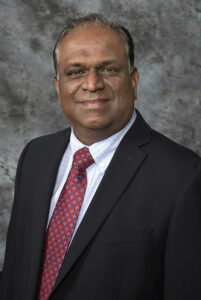By Deborah Jeanne Sergeant
Most people think of arthritis as an affliction of middle-aged through older adults.
Although that is largely true for the worn-out joints affected by osteoarthritis, juvenile idiopathic arthritis (JA) represents an autoimmune disease that is typically diagnosed in youth.
Previously called juvenile rheumatoid arthritis, it is a lifelong condition causing joint pain, swelling and if left untreated, causes organ damage throughout the body.
“Arthritis means joint inflammation and everyone thinks of it as something their parents and grandparents might get. But juvenile arthritis has been around, too,” said physician William Hannan, associate professor of pediatrics at Upstate Golisano Children’s Hospital, on the organization’s website. “It is one of the more chronic diseases of childhood, but it doesn‘t have the reputation of other chronic diseases.”
Because few people think of arthritis as affecting children, this can lead to difficulties of all sorts for families with children with JA.
“Because it’s so insidious, a diagnosed child looks fine one day in school and playing with peers and the next day, the child cannot walk,” said Nancy Sorbella, community engagement director for the Arthritis Foundation’s New York chapters in New York City and Albany. “Even the best teachers will say, ‘You’re not in pain; you were fine yesterday.’ Often parents have to educate their own community.”
That is why the Arthritis Foundation provides both community education and social outlets to families dealing with JA. This can help families get the advocacy and help their children need and help them connect with others in the same struggle.
One of the biggest struggles with JA is that so few board-certified specialists treat it. Sorbella estimates that they number only 420 nationwide, meaning each has an average patient load of 700 children. That is about half the number that an average pediatrician sees, according to the Association of American Medical Colleges. But visits for complicated medical cases such as JA tend to take much longer and require more frequent visits than an average, healthy child who visits annual for a well child check-up and an occasional illness.
JA specialists tend to work in larger cities, meaning most families must travel long distances for care, missing work and school.
“It really does not matter how much money you have,” Sorbella said. “To find the right specialists, they often have to travel all over the country.”
The Arthritis Foundation helps families find care providers and often serves as a resource to which providers refer their patients, both for practical and informational resources and for social outlets such as the free JA camps hosted around the country.

Allen Anandarajah, rheumatologist who directs the Early Arthritis Clinic at University of Rochester Medical Center, also runs the RA CHAMP program.
“I believe in empowering patients with education,” he said.
RA CHAMP helps patients find a care provider, learn how to share information with the provider, understand their medication and side effects, coordinate appointments, and find activity programs.
Anandarajah said that early diagnosis is so important because “it causes inflammation with the synovial tissue in the joint. When inflamed, it causes joint damage and disruption if not diagnosed and treated adequately.”
Typically, patients would notice joint pain, swelling and redness. Very young children may only cry without the ability to express what hurts.
JA can also affect other areas of the body, including eye and bone health. They may also become less active, which increases risk of other diseases and suffer mental health issues because of the challenges they face.
Rheumatoid arthritis drugs of the past typically mitigated pain but did little to slow the damage to joints and organs.
“The good thing is in the last 15 to 20 years, there have been the development of more medications that can make a meaningful difference to patients,” Anandarajah said.
“Children can do better with how they can deal with medicines,” Anandarajah said. “Some of the medications we use in quite high doses because their bodies can metabolize better than others. It’s an exciting time. We now may have tools to treat kids.”
He encourages parents and patients to stay positive and focus on promoting good health with a balanced, healthful diet low in sugar and fat and with physical activity.

